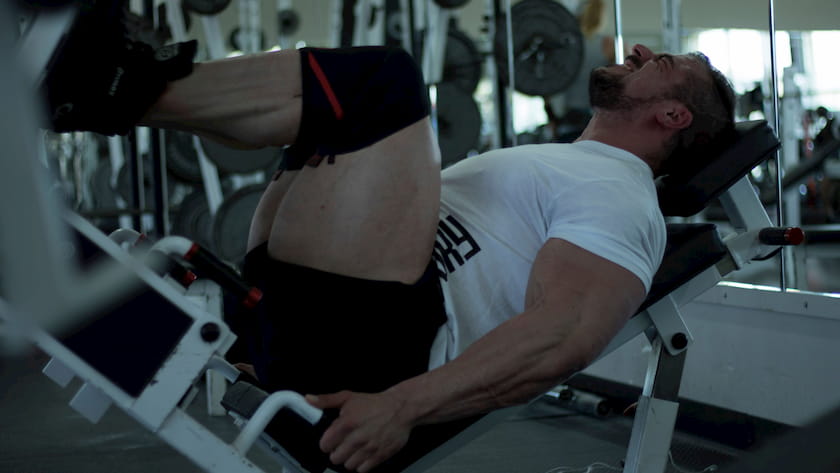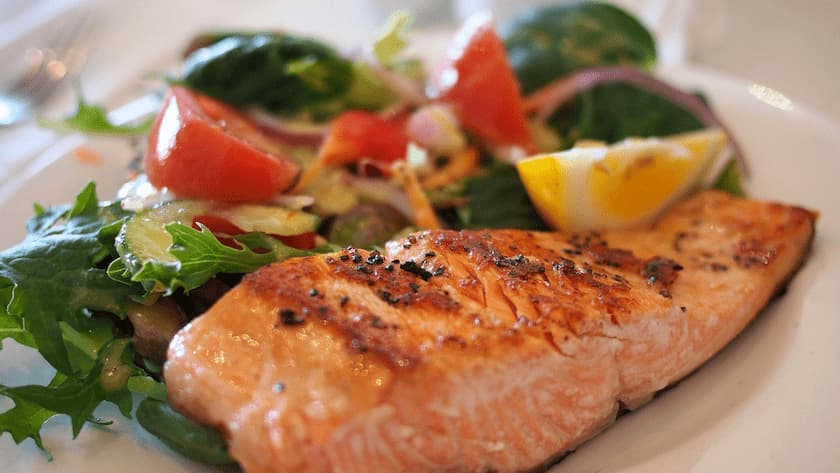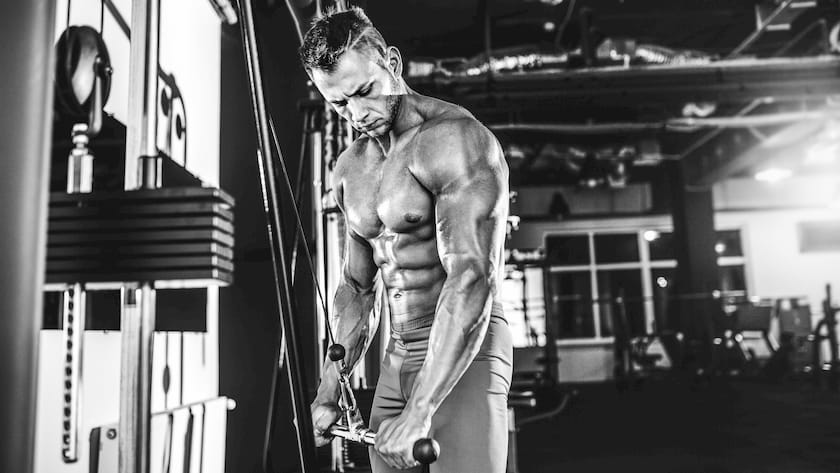Whether you are just starting out at the gym or planning to compete in your first bodybuilding competition, you DO NOT want to be the guy known for having a developed upper body and a pair of chicken legs.
To avoid this, or maybe eventually build a respectable set of legs, you need to have a structured plan in place.
Above all else, it is crucial to develop an understanding of what exercises train what muscle in the lower body. After all, it is the largest muscle group!
In this article, we’re going to break down the three primary muscles in our legs: the hamstrings, quads, and glutes. After that, we’ll take you through proper form and how-to guides, and offer a beginner’s program to start you on the journey to building HUGE legs!
Primary Muscle 1: Hamstrings
Often ignored by most, and trained at the end of leg sessions with little effort, we will first start with hamstrings.
The main two functions of the hamstrings are hip extension when the trunk is fixed and flexing of the knee joint. Therefore, the hamstrings cross and act upon two joints: the hip and the knee.
Why does this matter?
This makes them fairly simple to train from a beginners standpoint. To train the hip extension function, we can rely on movements such as stiff-legged deadlifts or good mornings.
Both movements allow us to take the hamstrings from a fully stretched position to a fully contracted position under resistance. The main focus with performing these movements effectively is executing proper form
Key points
- Do not round your upper back
- Engage your lower back and keep a straight position.
- Knee bend must be minimal when lowering the weight to ensure maximal stretch
Training the knee flexion function is a little simpler than hip extension. This is mainly because we can rely on machines to ensure we are using proper form and isolating the hamstrings even further.
More common knee flexion movements include lying hamstring curls, seated hamstring curls, and standing hamstring curls. Assuming the machine is adjusted properly for the user, these movements allow us to fully stretch and then contract the muscle under resistance.
Takeaways
- When lowering the weight during the lift, stretching your ankle upward can allow for an increased stretch on the hamstring
- When raising the weight during the lift, stretching your ankle down can allow for maximum contraction of the hamstring
- The entire body should be fixed in position while performing any of these versions of the hamstring curl. All body movement should be limited to the knee joint to completely isolate the hamstrings
It is recommended to start hamstring training with a knee flexion exercise to warm up the muscle safely, as well as to pump blood into the area.
Additionally, it is much easier to establish a “mind-muscle” connection with your hamstrings using isolation movements first. Once this connection is established, you can use a hip extension movement more effectively and in a safer manner.
Primary Muscle 2: Quadriceps
On to the meat and potatoes of any solid leg training program…
All four quadriceps are powerful extensors of the knee joint and serve many purposes. For now, we will leave the functions of the two most relevant to us: knee extension and flexing of the hip.
Let’s be honest, squats are the main component of leg training programming at any level and are the main tool for overall leg development. Although hamstrings and glutes do assist in squatting movements, quads do the majority of the work.
Breaking it down
The wider your stance while squatting the deeper you can get. Once you break parallel of the hip and knee joint, you activate much more glute and hamstring than if you stop at parallel.
This is okay if the focus is on developing the entire leg, but when focusing on quads it is best to stop before or at parallel.
To keep the focus on the quads, it is best to keep a closer stance by placing your feet shoulder width apart and slightly flaring your toes. With the closer stance, it is much harder to break parallel during the eccentric portion, therefore keeping all muscular tension on the quads throughout the entire movement.
Although barbell back squats are the most effective for beginners, there are many similar ways to train the quads. Using the smith machine to squat or a leg press machine may be a viable option for some because it allows greater freedom with foot position.
Also, if you struggle with your form on barbell back squats, starting with one of these may be a good way to build technique and then eventually move on to back squats.
Key points
- Barbell squats, dumbbell squats, smith machine squats, leg press, and power squat machines are all good options to train this type of movement
- Foot placement is very important in determining what muscle group is being targeted
- Your form is very important when squatting to avoid injury and work your quads properly
Important: Always choose using the proper form over using a heavier load!
Lunging movements are also great exercises to incorporate into quad training. They allow you to focus on one leg at a time while achieving maximal stretch and contraction of the muscle through knee extension and hip flexing.
Just like the squat, foot position is a deciding factor on how much hamstring and glute is brought into the movement. Generally, a longer stance will cause less quad activation and more hamstring and glute activation.
A shorter stance will help isolate the quad more. You can play around with this depending on what muscle you are targeting.
Some good lunging exercises are walking lunges, stationary lunges, and Bulgarian split squats.
Now that we’ve covered the compound portion of quad training, we will finish with how to isolate the quads completely through knee extension.
The most popular way to train this function is the leg extension machine. This can be a great tool to use in a few different ways:
- Warm up. The leg extension is a safe way to warm up the quads with a few high reps, lightweight sets to get blood in the muscle and ensure injury prevention before moving on to compound movements where you’re using heavier loads.
- Pre-exhaustion. 3 to 5 working sets of leg extensions are a great way to pre-fatigue the quads before moving on to your heavier movements. This allows you to use lighter weights on compound movements without sacrificing effectiveness.
- Finisher. After all the hard stuff is done, leg extensions are a great way to finish off the quads and leave you crawling out of the gym.
Primary Muscle 3: Glutes
The glutes are the strongest muscle group in your entire body! They are responsible for external rotation and extension of the hip joint. Glutes come in to play on some of the exercises we have already covered, such as stiff leg deadlifts, squats, and lunges.
How do we target the glutes you ask?
To target the glutes specifically, we can refer back to what we talked about earlier in the quadricep portion of this article. Instead of using a closer stance when performing squats or leg press, a wider stance would be preferred. The wider stance will allow us to increase our range of motion and therefore get “deeper” in the squat and leg press.
Essentially, the deeper you can get, the more glute activation that will occur. When performing lunges or split squats to target the glutes, a longer stance is preferred. Again, this lets us get a deeper range of motion causing increased glute activation.
Although the glutes get a lot of activation on the compound lifts, they may still be an area that needs some extra attention.
In this case, we want to train them under resistance through hip abduction. Many gyms are equipped with a hip abduction machine that can be very useful to train this function, specifically to isolate the gluteus medius.
If your gym doesn’t have a hip abduction machine, don’t fret! Bands can be very useful to train abduction as well. Simply place a resistance band around your thighs and doing an exercise like crab walks.
Another great exercise to train the glutes in the hip extension function is barbell hip thrusts. These can be performed by placing the back of your shoulders on a bench while loading a barbell across the hips. From there you thrust your hips upwards, engaging the glutes and hamstrings.
Key points
- All of the lower body compound lifts will cause some sort of glute activation. How much you get is entirely dependent on foot placement and range of motion.
- When glutes are the focus, it may be best to start with an isolation movement to establish a mind-muscle connection before moving on to any compound lifts.
Now that we have looked at each primary leg muscle individually, let’s take a look at what a beginners leg program looks like.
Note that the program below is recommended to be performed 1-2 times per week.
This is all dependent on your comfort level with each and every movement as well as how well your body recovers from the previous workout. As stated before, the most important part of this program is developing proper form, preventing injury, and staying within your limits, all while pushing yourself.
Beginner Program for Massive Legs
Quad Exercises
1. Leg extension
- Sets: 4
- Reps: 10-15
2. Barbell back squats
- Sets: 4
- Reps: 6-8
3. Walking lunges
- Sets: 3
- Reps: 20
4. Close stance leg press
- Sets: 3
- Reps: 12
Hamstring and Glute Exercises
1. Lying hamstring curl
- Sets: 4
- Reps: 10-12
2. Wide stance leg press
- Sets: 3
- Reps: 8-12
3. Stiff leg deadlift
- Sets: 3
- Reps: 10 reps.
4. Barbell hip thrust
- Sets: 3
- Reps: 10-12




Leave a comment
All comments are moderated before being published.
This site is protected by hCaptcha and the hCaptcha Privacy Policy and Terms of Service apply.